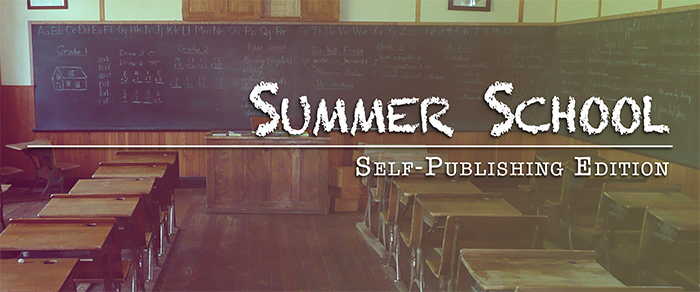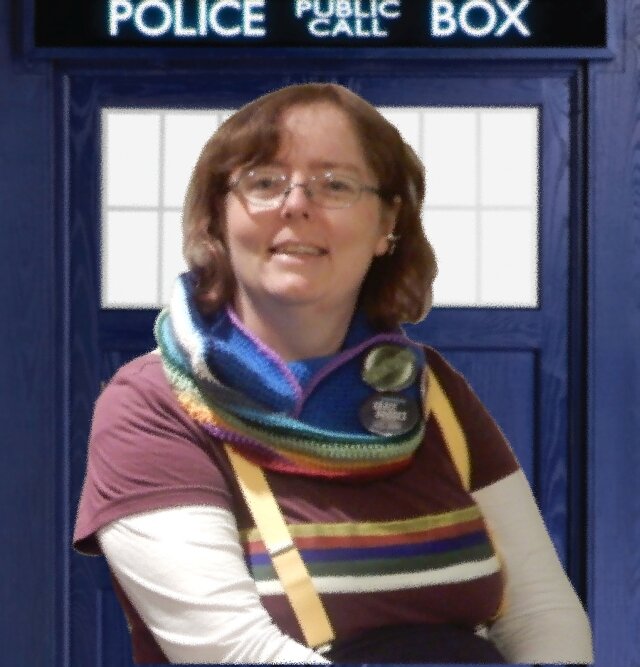Writing Unstuck: Produce Novels More Quickly Guest Grace Bridges
Please join me in welcoming Grace Bridges to the blog! If you're a realmie, you'll recognize Grace as someone who tends to jump at the chance to help out the authors around her. A mentor and author of numerous published works (seriously, she has three pages of published books on amazon... so I gave up trying to count them!) Grace is here today to talk a little bit more about the "before you publish" stage of the process... namely, some tips and tricks on getting through your rough drafts more quickly so that you can get to the actual business of publishing!
WRITING UNSTUCK: How to produce novels more quickly
by
Grace Bridges
As a self-publisher, it’s clear that publishing more often will gain more readers just from the momentum of the series and hopefully your growing notoriety. And yet many of us find it hard to knuckle down and produce the words. Well, listen up, because I’m going to tell you how I cracked it for myself. It’s probably going to be different for every person, but I’ve seen wildly different kinds of writers succeed by using even a part of this method.
OUTLINING OVERVIEW
Outlining has always been important to me (to a certain degree), knowing roughly what has to happen in a scene (but not necessarily how). For many years I have written all my stories from one-sentence scene summaries that I create as part of going through the Snowflake Method invented by the wonderful Randy Ingermanson. Now admittedly my pantsing side doesn’t like to do all of the work Randy recommends. He says you can spend up to a hundred hours on preparation before you ever start writing for real, but I’ve done it in two. I focus on about half of his ten steps, dropping the ones that deal with characters (sorry Randy! I’ve found that characters tend to develop as I get to know them, and yes I do go back and deepen them later during edits!)—instead making sure my plot is solid and that I know the basics of what is going to happen. And in a hundred hours of work, my draft is finished.
By the way, all props to Randy! Please go and read up on the Snowflake Method at https://www.advancedfictionwriting.com/articles/snowflake-method/ - and read his books, too. They’re very sophisticated.
Specifically, the steps I use from the Snowflake are as follows:
Step 1: A One Sentence Idea, keeping in mind 3 disasters and an ending if you want to follow the Three Act Structure.
Step 2: Expand that sentence to four sentences, one for each disaster and the ending.
Step 4: Expand each sentence to its own paragraph. That’s a page length synopsis.
Step 6: Make each paragraph into a page by adding more detail.
Step 8: Break it into scenes (by location, event, or point of view changes) and write one sentence for each. If too much planning spoils your fun, be vague.
If you’re a total pantser and can’t imagine writing out all of your scenes as single sentences, perhaps you can still make use of the benefits by very briefly jotting down what might come next, before you start your day’s writing, one scene at a time. One sentence should do it. I always do my planning in handwriting. It seems to activate the right corners of my brain to prime me for full-on creating.
That sentence describing my next scene becomes the most important tool in my progress because it means I know what happens next—and that’s my single best weapon against the blank page.
Scene list for Earthcore Book 1: RotoVegas (Green numbers are days)
KNOW WHERE YOU’RE GOING
So the Scene List has often rescued me from writer’s block. I’ve worked that way for many years. But in when I participated in NaNoWriMo for the first time (under protest at the “National” part—on my winner’s certificate I took my best ink pen and amended it to “International”), this required a very specific writing goal of 1667 words every day, and that required discipline and strategy like I’ve never had to do before. I was all prepared with my scene list. However, I would sit down to write and the words weren’t coming fast enough. I found myself staring at a blank screen far too often, struggling to translate that one-sentence scene summary into almost 2000 words, and the leap was too large to make quickly.
Desperate for a solution, I began to plan out my scenes in more detail. Not in a technical way at all, not with action-reaction bites or scene/sequel combinations, etc. And totally not specific. All I did was take my one-sentence summary and spend a couple of minutes expanding it into several sub-points. Specifically, I aimed to have at least eight points. Why eight? Because in aiming for over 1600 words per day and scene, if I have eight points, each one needs only a little more than 200 words. It’s like a daily goal, except smaller. If I get interrupted and have to come back to it later, I can still feel good that the sub-points I’ve covered so far have got the necessary wordcount.
What does this look like in practice? Here’s an example from a novel I wrote just before last year’s NaNo. It’s the second to last scene in the book, where the heroes are preparing for an epic battle, and in my scene list it was described only as “Battle Prep.” To power up, they have to visit several hot springs in the area, including one on an island in the lake. My sub-points for this scene are:
- Launch the boat
- Land on island
- Walk to stream, fill up (you’ll have to read the story to discover what exactly that means!)
- Return to mainland
- Anira gets in stream with elder praying
- What she experiences
- Heading to lakeside park (location of final battle)
Now of course as I wrote it turned out different and didn’t exactly match 200 words per point. But once I describe what is happening in each sub-point, add some scenery description and ambience, plus dialogue, it is much easier to get one of these tiny points close to 200 or beyond than it is to get “Battle Prep” to 2000 all by itself.
Jotting the sub-points can be done immediately before you write, or after you finish the previous day’s scene, or last thing at night so it’s ready for the morning. It’s something like the best feeling in the world to return to the task on a new day and discover you’ve already ensured you’re not going to get stuck.
And did you notice the sub-points are kind of vague? They can be even more vague than this. I’m currently working on Earthcore Book 5, and I have a scene currently titled “They do the thing.” Now, I’m not even really certain what the thing is, but I’ll allow myself to come up with that when I scribble down some sub-points for that scene. I do know that to serve the story at this point, they have to fail at least partially, a certain person has to show up, others leave, and there has to be a geyser. That’s all I know. If you know my books you’ll recall there are almost always geysers, so that part really isn’t hard to come up with.
So: plan small sections, be vague, and pants the rest. Yes, it is totally a numbers game. And it’s kind of like magic, once I push through the thirty seconds of “don’t-wanna” and start in on my sub-points: words just kind of roll on out without much of a pause except for where I actually have to make up something specific. Surprisingly, that’s often the easiest part of all, and hey folks, it feels like pantsing.
(Preliminary sub-points)
NIX DISTRACTIONS
I don’t know about you, but I can’t write with an Internet connection.
Of course there are other distractions in life, such as eating, sleeping, and caring for the other souls in my house (mostly furred and feathered babies in my case). But once I sit down to write—at a computer, funnily enough—if it is connected to the Internet, I don’t tend to write much. If at all.
So I have to kill the connection. Flipping the WiFi button is a good start, though it’s way too easy to flip back on if something occurs to me that I must absolutely look up right now. Unplugging the router is more effective, if no one else in the house currently needs to be connected. Of course this means there can be absolutely no research while writing. I often insert notes such as [CHECK THIS] or [NAME OF STREET NEAR LAKE] which I can find later by searching for square brackets. The same applies to figuring out names for new minor characters—I tag them as ABC, XYZ, just to be able to continue without pause.
Writing by hand also works well, but then I have to re-type it—although that means I get a first edit in too. I am sure there are other solutions out there, and you may be able to think of something you have on hand—for example writing on your phone if it has no data connection. There are also apps like Write or Die, Self Control, or the full-screen setting on Scrivener. Whatever works for you.
My personal secret weapon is the Neo Alphasmart. This little device is equipped with a full-size keyboard and a six-line screen. Its memory holds eight 50-page documents which can be transferred to your computer using Bluetooth or a printer cable. Of course, it has no Internet connection. Now, sadly it’s not being made any more, but there are a fair few floating around the secondhand marketplaces online. This, along with the sub-points I detailed in my previous post, has been a crucial factor in being able to finish my last five novel drafts in about a month each.
Get disconnected—and get writing!
RITUALS
When I’m in the middle of writing a first draft, my mornings are the same from day to day.
I get up and feed all the animals—over 10 at times, depending on the number of foster cats—then prepare my enormous cup of tea that holds as much as three regular cups. I set it on the windowsill next to the couch, and make sure my lap desk is in place together with my Alphasmart, my scene list and hastily jotted sub-points, extra paper and a pen and pencil, and maybe some nuts in case the old stomach starts to growl (but getting up would disturb the flow). It can also be useful to have a couple of craft books on hand for reference, provided I’m not tempted to read long sections of them.
For me it must be the same seat on the same couch every time. Just like Sheldon watching Doctor Who. I can look up and stare into the distance while thinking—between my camellia trees where the blackbirds are nesting, across the suburbs and the sea to the looming volcanic peaks of Rangitoto Island, where the final climax took place in my novel Volcano City.
When I complete my scene for the day, that’s when I turn on the computer, transfer the text from the Alphasmart to Scrivener, and take note of my overall statistics.
Not touching the computer until I’m done is a key to success. In older times I used to drink my first cup of tea while perusing Facebook and the news sites. Hours would vanish into a black hole. But now, at least when I have a project going, my mornings are isolated from outside influences and thus much more gentle—and productive. It’s all about establishing the ritual.
AND FINALLY…
Don’t stress out about following any of these suggestions. Even if one of them speaks to you, try it out and see what happens. Find the method that works for you. I found this method when I got desperate due to that self-imposed competitive NaNo deadline, and I hope you’ll find something here that helps you, too.
About the Author
Geyser hunter. Cat herder. Editor and translator. Kiwi.
Grace is the current president of writers’ association www.SpecFic.NZ, and the Chair of www.GeyserCon.NZ. She’s often found poking around geothermal sites, wandering beaches, or under a pile of rescued kittens. Her work includes cyberpunk and space opera as well as the Earthcore urban fantasy series based in New Zealand. The Earthcore short story “Initiation” is free on the front page at www.gracebridges.kiwi.
For a free copy of the novel Earthcore 1, head to www.gracebridges.kiwi/signup, or check out the series on Amazon at https://www.amazon.com/gp/bookseries/B07HM9P3N8/






